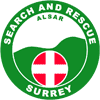Dogs used in search-and-rescue operations could soon be fitted with satellite navigation technology to help locate trapped victims after an earthquake or similar disaster.
The number of victims in these situations is often unknown and the responsibility of calling off the search-and-rescue operation lies with the emergency co-ordinator. His or her decision is based on a judgement call that relies heavily on memory to assess how extensively an area has been covered.
’This is a very difficult decision that requires experience and instinct,’ said Dr José Caro Ramón, from Spanish technology firm GMV. ’Our system is an attempt to provide more certainty to rescue co-ordinators by using solid data.’
The technology, known as Osmografo, combines information on the scenting abilities of the dog with data on its location. This information is transmitted from a receiver on the dog’s collar to a central monitoring unit that contains sensors to measure wind speed and direction.
Once all the data has been gathered, a software package is used to produce a real-time map of the area covered by the canine rescue teams. Other details, such as danger zones and locations of known victims, are automatically included to help rescuers make rapid decisions on the best course of action.
’Combining all of this information is crucial in getting a better idea of how thoroughly an area has been searched,’ said Ramón. ’Wind is a major factor that can help the dog cover a much larger area. A moderate wind can allow a dog’s sense of smell to increase by a more than a few dozen metres.’
The system can work in the absence of a telecommunication infrastructure by using industrial scientific and medical (ISM) radio bands. Ramón added: ’The one difficultly we’ve had so far in testing is instability in the communication module so, while it is ready for training purposes, in an operational situation the signal could be blocked by other buildings.’
Engineers from GMV are now working alongside volunteers from the K9 non-governmental organisation to solve the communications problem for operational requirements.
In the meantime, Ramón believes that the system could provide a valuable tool in training scenarios where an absence of buildings means that a stronger signal can be obtained.
Search-and-rescue dogs fitted with GNSS
6 posts
• Page 1 of 1
Search-and-rescue dogs fitted with GNSS
Search-and-rescue dogs fitted with GNSS retrieved from http://www.theengineer.co.uk/news/news-analysis/search-and-rescue-dogs-fitted-with-gnss/1002101.article
Daryl Toogood
President
Berkshire Search & Rescue Dogs
"I can explain it in Dog, but you only listen in Human."
-- Gaspode the wonder dog
President
Berkshire Search & Rescue Dogs
"I can explain it in Dog, but you only listen in Human."
-- Gaspode the wonder dog
- Daryl
- Posts: 2624
- Joined: Sat Feb 09, 2008 12:42 am
- Location: Berkshire
Re: Search-and-rescue dogs fitted with GNSS
I like this How it works and demo
Always remember you're unique, just like everyone else
-

roland and meg - Posts: 1506
- Joined: Mon Nov 02, 2009 5:31 pm
- Location: Spencers Woof
Re: Search-and-rescue dogs fitted with GNSS
I had heard of this with my investigations into all things dog collar
This the presentation
http://www.application-days.eu/presenta ... 010_en.pdf
The main difference with this and standard real time plotting is they take the wind direction into account. So it gives you a "cone effect" and shows how the dog has searched down wind.
This the presentation
http://www.application-days.eu/presenta ... 010_en.pdf
The main difference with this and standard real time plotting is they take the wind direction into account. So it gives you a "cone effect" and shows how the dog has searched down wind.
Always remember you're unique, just like everyone else
-

roland and meg - Posts: 1506
- Joined: Mon Nov 02, 2009 5:31 pm
- Location: Spencers Woof
Re: Search-and-rescue dogs fitted with GNSS
Let's get some
-

sven - Posts: 196
- Joined: Wed Aug 20, 2008 7:55 pm
- Location: Binfield
Re: Search-and-rescue dogs fitted with GNSS
Looks interesting......Bet it is expensive!!!
Main issue I can see (from the pdf) is that the range is only 250 metres.....
.../m
Main issue I can see (from the pdf) is that the range is only 250 metres.....
.../m
- mark_n
- Posts: 1503
- Joined: Tue Jul 15, 2008 11:19 pm
- Location: Binfield, Berks
Re: Search-and-rescue dogs fitted with GNSS
also its does say operationaly may be affected by 'other' buildings (whatever that means) - wonder how it would stand up to heavily wooded areas?
They seem to be trialing with non-government funded units (asume in Spain) - they might be interested in 'trialing' it internationaly!!
sorry doesn't "government funded" just non-government!!
They seem to be trialing with non-government funded units (asume in Spain) - they might be interested in 'trialing' it internationaly!!
sorry doesn't "government funded" just non-government!!
-

rich&sassy - Posts: 606
- Joined: Mon Mar 22, 2010 4:03 pm
6 posts
• Page 1 of 1
Return to Search & Rescue Dogs in the Media
Who is online
Users browsing this forum: No registered users and 11 guests

